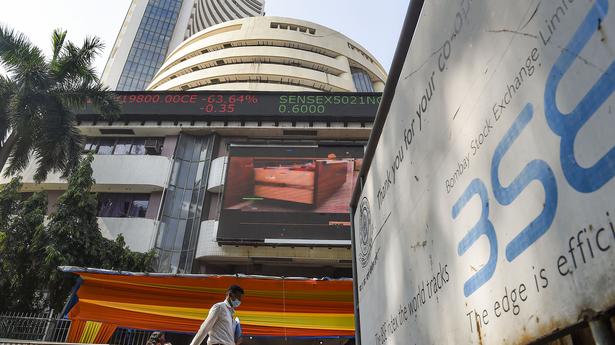
FPIs pull out ₹18,856 cr from Indian markets in February so far
The Hindu
Investors are exiting amid the geopolitical tensions and chances of a rate hike by U.S. Federal Reserve
Foreign portfolio investors (FPIs) have withdrawn a net ₹18,856 crore from the Indian markets in February so far amid geopolitical tensions and chances of a rate hike by the U.S. Federal Reserve.
As per depositories data, overseas investors took out ₹15,342 crore from equities and ₹3,629 crore from the bonds market between February 1-18. At the same time, they invested ₹115 crore in hybrid instruments.
This translates into a net outflow of ₹18,856 crore during the period under review.
This is the fifth consecutive month of foreign fund outflows.
"Geopolitical tension and chances of rate hike by US Fed has triggered outflows from FPIs in the recent times from the Indian equity markets. They sharply increased the pace of selling after the US Fed indicated an end of the ultra-loose monetary policy regime," said Himanshu Srivastava, Associate Director - Manager Research, Morningstar India.
Shrikant Chouhan, Head - Equity Research (Retail), Kotak Securities, said investors shifted to defensive sectors and safe havens such as bonds and gold as tensions flared between the U.S. and Russia over Ukraine.

The Union Budget unveiled on February 1, 2025, has come at a time of unprecedented global uncertainty and a flagging domestic economy. The real GDP growth is estimated at 6.4% for 2024-25 and between 6.3-6.8% for 2025-26, a far cry from >8 percent growth required annually to make India a developed nation by 2047. While much attention has been devoted to the demand stimulus through income tax cuts, not enough is said about the proposed reforms in urban development, tariff rationalisation, and regulatory simplification aimed at making Indian cities and corporates more competitive. Since the majority of economic activity is located in cities (urban areas account for ~55% of GDP) and produced by large corporates (~40% of the national output and 55% of India’s exports), the above-mentioned reforms have a pivotal role in improving India’s trend growth rate. Below we unpack each reform.












